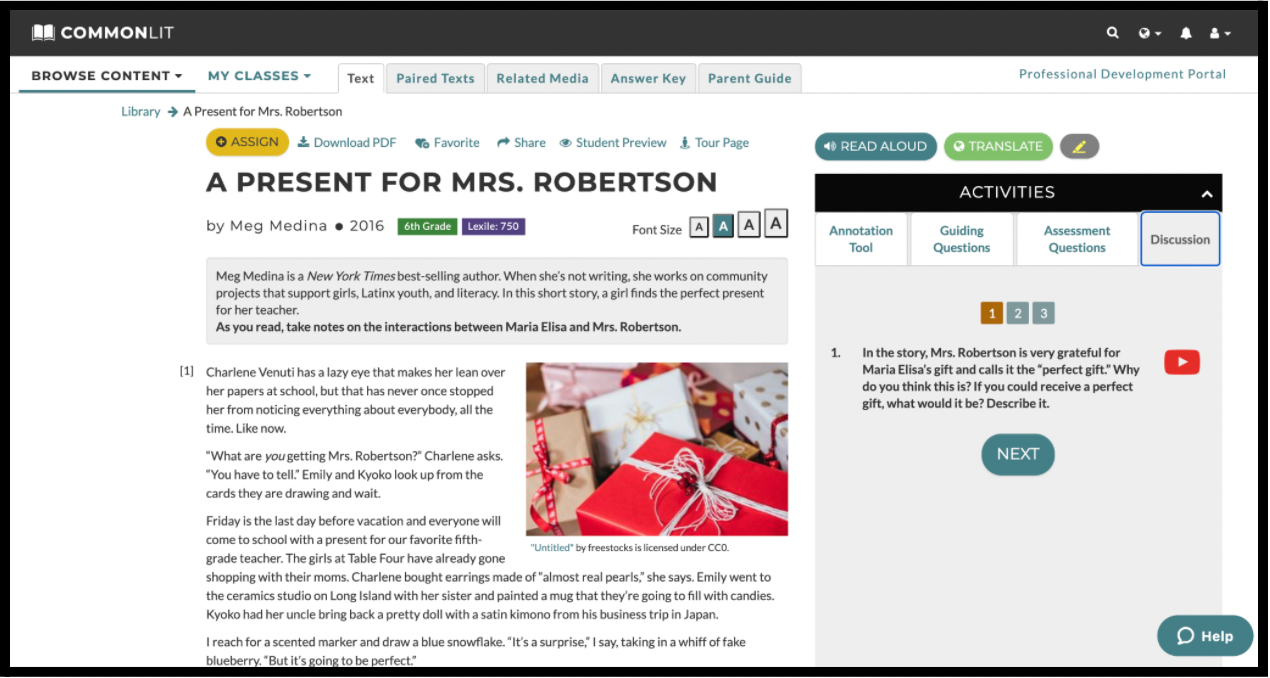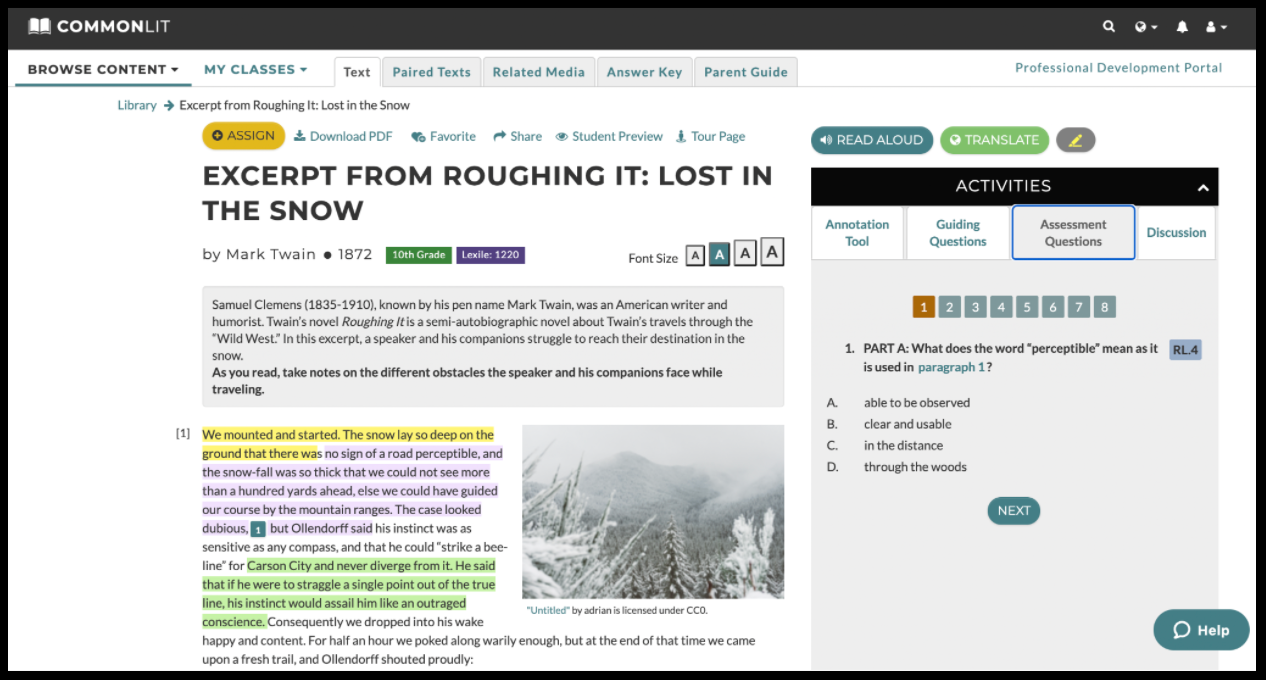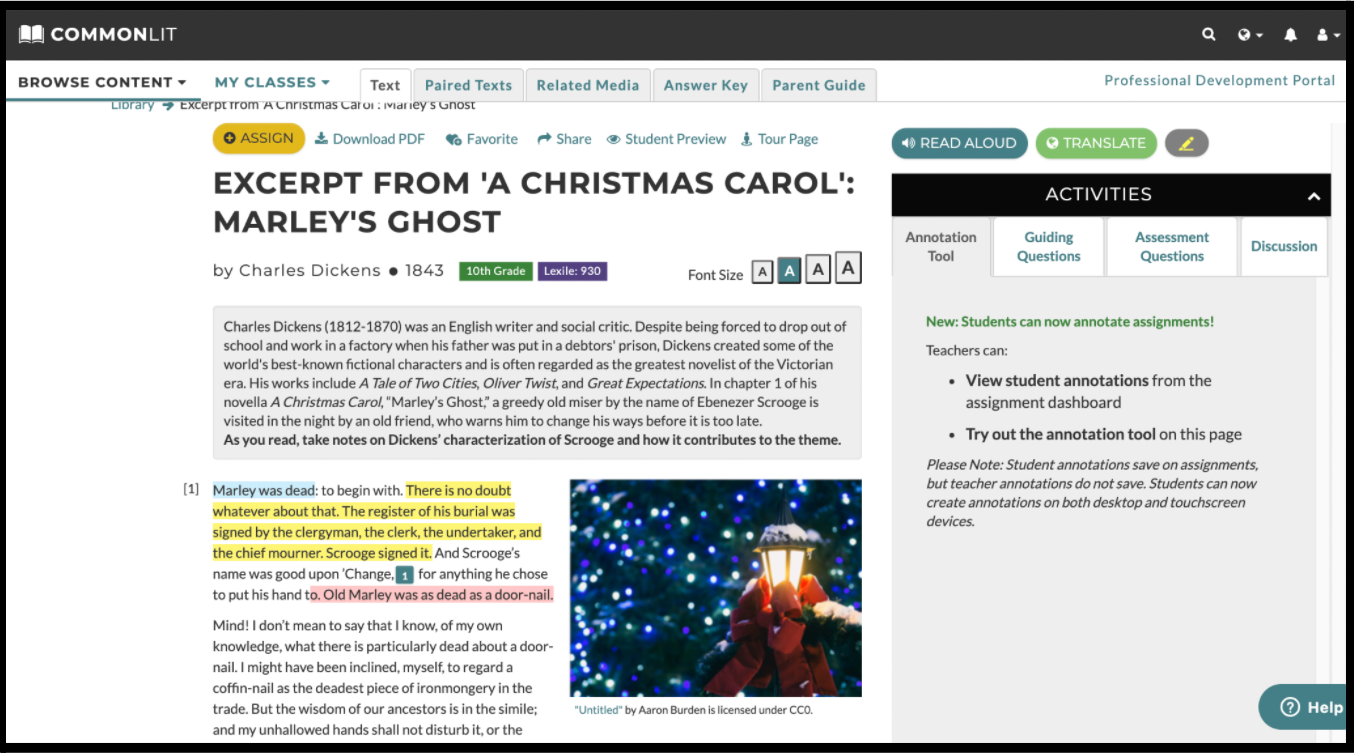Here are eleven engaging texts about winter weather and holiday celebrations!
The holiday season has just begun, and these last few weeks leading up to break can just fly by! We want to make the transition to break just a little bit easier with a collection of texts sure to make your classrooms merry and bright!
Celebrate the season with these eleven multi-genre texts for middle school and high school about winter, the holidays, family, and goodwill to others!
“Fish Cheeks” by Amy Tan (6th Grade)
A Christmas Eve dinner is mortifying for young Amy as she views her family’s Chinese cuisine through the eyes of her crush, the preacher’s son, Robert, when his family comes over. In this short story, Amy must navigate the conflict between her desire to fit in with her peers and her cultural heritage. Students will find Amy’s concerns about the different parts of her identity relatable. Have students discuss how the short story’s ending highlights Amy’s inner conflict.
“Father of All Forecasters” by Charles Brusso (6th Grade)
Ever wonder how weather forecasters are able to predict a snow day? Have students read about the father of modern weather forecasting, Cleveland Abbe! In this informational text, students will learn about the development of meteorology and the establishment of the National Weather Service. After reading, students could write about their “perfect snow day forecast.” Then, have students share their favorite winter pastimes with the class.
“A Present for Mrs. Robertson” by Meg Medina (6th Grade)
In this short story, Maria Elisa struggles to fit in with other students in the advanced class taught by Mrs. Robertson. To make matters worse, the students are expected to get a gift for their teacher before winter break, and the gift Maria’s mom chose is so embarrassing! Many students will relate to Maria’s struggle to fit in, and this story is an excellent springboard for conversations about what truly matters about the presents we give other people.

“On Feathers, Fat, and Freezing” by Donna DeVoe DiFolco (6th Grade)
Humans aren’t the only ones who need a big fluffy coat to handle the cold! Read more about how chickadees survive the cold winter months near Fairbanks, Alaska. For example, did you know that chickadees can lower their body temperature by 20°F while they sleep? Have students make connections to what they have learned in science class and discuss other animals that have adapted to survive harsh weather.
“Five Reasons Why Being Kind Makes You Feel Good — According to Science” by Jo Cutler, Robin Banerjee (7th Grade)
The holiday season is a time that encourages goodwill and service to others. This article outlines a few different ways being kind to others gives us that warm fuzzy feeling — such as making connections, righting a wrong, and receiving kindness in return! Have students brainstorm some things they can do to bring goodwill and cheer to others.
“Blizzard” by Linda Pastan (8th Grade)
Ever been snowed in? This poem describes how a blizzard reforms the landscape into snowy scenes reminiscent of bears, windsocks, and elderly women knitting. Students will be able to identify clear imagery in its sparse free verse structure. As students read, have them follow the annotation task, which asks them to take notes on how the author uses figurative language to describe the blizzard.
“The Gift of the Magi” by O. Henry (8th Grade)
This short story by O. Henry about Christmas has one of his classic twist endings! A young couple with little money attempt to buy presents for each other to unexpected results. While students are reading, have them consider the importance of gift giving to the couple. Have students discuss whether they would have made similar sacrifices if they were in the couple’s shoes.
“There’s a Certain Slant of Light” by Emily Dickinson (9th Grade)
The change of the seasons can impact people differently. In this poem by Emily Dickinson, the speaker is profoundly affected by the changing light in the winter months. Have students read the poem and analyze its meaning. Ask students to discuss the meaning of the “imperial affliction” and what winter means to them.
“Excerpt from Roughing It: Lost in the Snow” by Mark Twain (10th Grade)
“Back in my day, we had to walk to school uphill through six feet of snow!” is a common refrain from older family members everywhere once winter arrives. In Twain’s semi-autobiographical account of his dogged toil through the snow, students will read a similar story. As students read, ask them to think about how each character responds to the problem they find themselves facing. Then, have students discuss if they have ever felt as lost as the speaker and his companions.

“Excerpt from ‘A Christmas Carol’: Marley’s Ghost” by Charles Dickens (10th Grade)
A Christmas Carol is a holiday classic which we often forget begins as the story of a haunting. In this excerpt, old miser Ebenezer Scrooge is visited by an old friend from beyond the grave. Marley warns Scrooge to abandon his selfish ways and foretells the visitations that will follow in the night ahead. Before reading, have students brainstorm what characteristics they associate with Ebenezer Scrooge. As they read, prompt them to annotate words or phrases that support those descriptors in the passage.

“Why There’s No Place Like Home for the Holidays” by Frank T. McAndrew (10th Grade)
Many people visit their childhood homes during the holiday season. This article discusses the psychology behind why we get attached — or rooted — to places similarly to the way we get attached to people, and how cultural attitudes about home differ around the world. Have your students define what “home” means for them. They can share what makes home special, whether “home” is a physical place or a group of people, and what places feel like home to them.
Next Steps
Looking for more great texts to share with your students? Check out our CommonLit library!
If you’re interested in learning all about CommonLit’s free digital literacy program, join one of our upcoming webinars!


